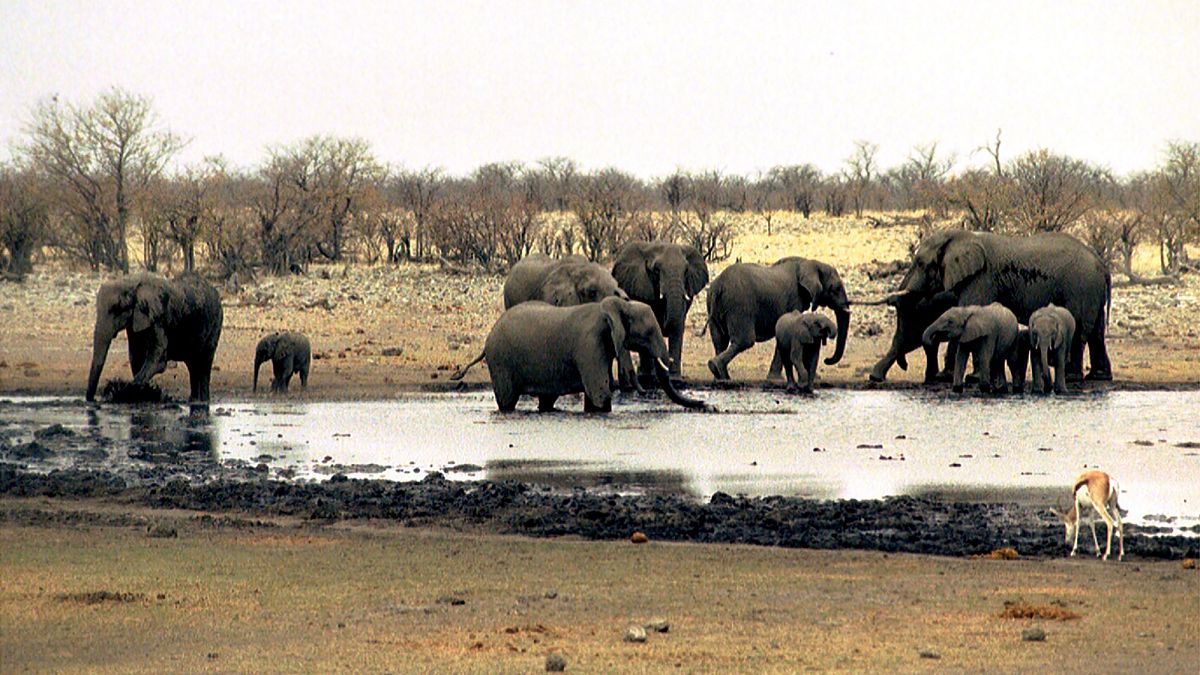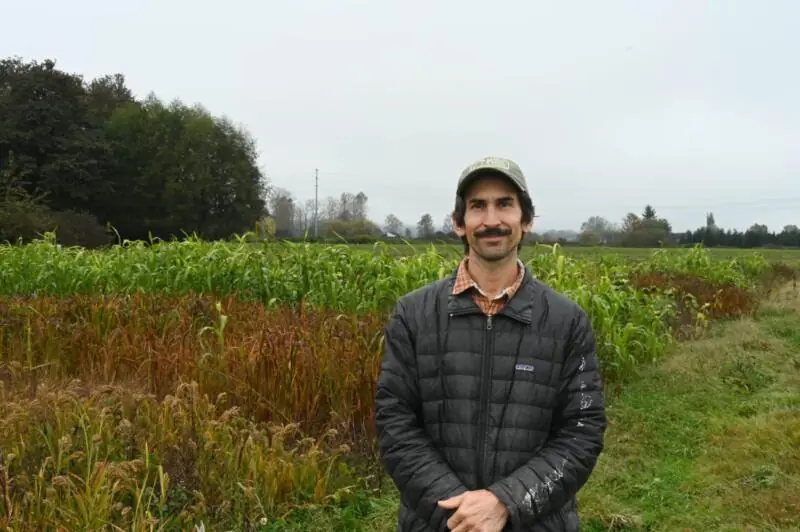EU lawmakers plead UN body to go hard on wildlife trafficking by 2030 – Euronews.com

European Union Initiative to Combat Wildlife Trafficking in Alignment with Sustainable Development Goals
Executive Summary: Aligning with SDG 16
European Union lawmakers are advocating for the international recognition of wildlife trafficking as a form of serious organized crime by 2030. This initiative, to be presented at the upcoming United Nations Convention on International Trade in Endangered Species of Wild Fauna and Flora (CITES) in Uzbekistan, directly supports the objectives of Sustainable Development Goal 16: Peace, Justice and Strong Institutions. By targeting the illicit trade networks, the proposal aims to significantly reduce illicit financial and arms flows (Target 16.4) and develop effective, accountable, and transparent institutions at all levels.
Protecting Global Biodiversity: A Focus on SDG 14 and SDG 15
The legislative mandate emphasizes the urgent need to halt biodiversity loss, a central tenet of Sustainable Development Goal 15: Life on Land. The primary objective is to ensure that all trade in wild fauna and flora is legal, sustainable, and consistent with the long-term conservation of species. This directly addresses Target 15.7, which calls for urgent action to end poaching and trafficking of protected species.
- Terrestrial Species: Increased protection is sought for elephants, rhinoceros, wild birds, and amphibians. Specific concerns were raised regarding a lack of transparency in China’s pangolin stockpiles.
- Marine Ecosystems: In line with Sustainable Development Goal 14: Life Below Water, lawmakers have requested enhanced protection for shark and ray species to combat threats to marine biodiversity.
Proposed Strategic Measures for Enforcement and Accountability
To achieve these goals, European lawmakers have identified that current international provisions are inadequate. They propose a series of measures to strengthen enforcement and ensure accountability, contributing to the institutional framework of SDG 16.
- Legally Binding Instruments: A proposal is in place for a legally binding instrument to completely stop ivory trafficking within the European Union.
- Digitalization and Traceability: A call for greater digitalization and improved traceability systems to ensure comprehensive control over the trade of protected species.
- Enhanced Controls and Sanctions: The plan includes strengthening border controls and implementing more effective coercive measures to penalize illegal activity.
Multilateral Cooperation and Partnerships: The Role of SDG 17
The EU’s participation in the CITES conference is framed as a critical opportunity to reinforce multilateral cooperation, a cornerstone of Sustainable Development Goal 17: Partnerships for the Goals. The European Commissioner for Environment highlighted the meeting as a crucial moment to strengthen the global fight against wildlife trafficking.
- EU’s Role: Reports from the International Fund for Animal Welfare (IFAW) identify the EU as a central hub and destination for trafficked wildlife, underscoring the bloc’s responsibility to lead enforcement efforts.
- Stakeholder Collaboration: The resolution has been welcomed by organizations like IFAW, which calls on the European Commission and EU member states to adopt the Parliament’s strong negotiating stance, demonstrating a partnership between governmental bodies and civil society to achieve shared sustainability objectives.
Analysis of Sustainable Development Goals in the Article
1. Which SDGs are addressed or connected to the issues highlighted in the article?
-
SDG 15: Life on Land
- The article’s primary focus is on protecting terrestrial and marine ecosystems and biodiversity. It explicitly discusses the trafficking of species like elephants, rhinoceros, pangolins, wild birds, and amphibians. The central goal mentioned is to “ensure that the only trade in wild fauna and flora is legal and sustainable, consistent with long-term species conservation and helping halt biodiversity loss.”
-
SDG 16: Peace, Justice and Strong Institutions
- The article addresses the need for stronger governance and legal frameworks to combat crime. European lawmakers are pushing for “wildlife trafficking to be recognised as organised crime.” It also highlights the need for better enforcement, multilateral cooperation, and coercive measures to tackle illegal activities, which are all components of building strong and just institutions.
2. What specific targets under those SDGs can be identified based on the article’s content?
-
Under SDG 15 (Life on Land):
- Target 15.5: “Take urgent and significant action to reduce the degradation of natural habitats, halt the loss of biodiversity and, by 2020, protect and prevent the extinction of threatened species.” The article directly relates to this by mentioning the need for increased protection for specific threatened species like sharks and rays and the overall goal of halting biodiversity loss.
- Target 15.7: “Take urgent action to end poaching and trafficking of protected species of flora and fauna and address both demand and supply of illegal wildlife products.” This is the core theme of the article, which discusses the EU’s role as a hub for wildlife trafficking, the rise in online trade, hidden hunting, and the proposal for a legally binding instrument to stop ivory trafficking.
- Target 15.c: “Enhance global support for efforts to combat poaching and trafficking of protected species…” The article emphasizes the importance of multilateral cooperation through the UN convention, calls for all countries to step up enforcement, and mentions the EU’s support for online enforcement networks, all of which align with enhancing global support to combat this issue.
-
Under SDG 16 (Peace, Justice and Strong Institutions):
- Target 16.4: “By 2030, significantly reduce illicit financial and arms flows, strengthen the recovery and return of stolen assets and combat all forms of organized crime.” The explicit call for “wildlife trafficking to be recognised as organised crime” directly links the issue to the broader fight against organized crime as outlined in this target.
- Target 16.a: “Strengthen relevant national institutions, including through international cooperation, to build capacity at all levels… to… combat… crime.” The article discusses the EU’s support for “online enforcement networks that enable information sharing among customs, police, and environmental authorities,” which is a clear example of strengthening institutional capacity through cooperation.
3. Are there any indicators mentioned or implied in the article that can be used to measure progress towards the identified targets?
-
Implied Indicators for Target 15.7:
- The article mentions an “increased demand for protected banned species, especially through online trade” and the EU’s role as a “central hub and destination for wildlife that has been ‘stolen’.” This implies that progress could be measured by tracking the volume and value of illegal wildlife trade, both online and offline. This relates to the official indicator 15.7.1 (Proportion of traded wildlife that was poached or illicitly trafficked).
-
Implied Indicators for Target 15.c:
- The call for a “legally binding instrument to stop ivory trafficking in the EU” and for all countries to “step up their enforcement of the UN convention” suggests that a key measure of progress is the adoption and implementation of strong legal frameworks and enforcement actions. This aligns with the concept behind indicator 15.c.1 (Proportion of countries that are primary source and/or transit countries for confiscated wildlife with a legal framework in place for managing confiscated wildlife).
-
Implied Indicators for Target 16.4:
- By framing wildlife trafficking as a form of “organised crime” and an illicit flow of “stolen” assets, the article implies that measuring the scale of this illegal trade is crucial. Progress would be a reduction in the value of this illicit flow, which is the essence of indicator 16.4.1 (Total value of inward and outward illicit financial flows).
4. Create a table with three columns titled ‘SDGs, Targets and Indicators” to present the findings from analyzing the article.
| SDGs | Targets | Indicators (Implied from the article) |
|---|---|---|
| SDG 15: Life on Land |
15.5: Halt biodiversity loss and protect threatened species.
15.7: End poaching and trafficking of protected species. 15.c: Enhance global support to combat poaching and trafficking. |
Reduction in the extinction risk of threatened species (sharks, rays, elephants, etc.).
Reduction in the volume and value of illegal wildlife trade, particularly online (related to indicator 15.7.1). Number of countries and blocs (like the EU) implementing legally binding instruments and strengthening enforcement against trafficking (related to indicator 15.c.1). |
| SDG 16: Peace, Justice and Strong Institutions |
16.4: Reduce illicit flows and combat all forms of organized crime.
16.a: Strengthen national institutions through international cooperation to combat crime. |
Reduction in the value of illicit flows from wildlife trafficking, recognized as a form of organized crime (related to indicator 16.4.1).
Increased information sharing and operational capacity of enforcement networks (customs, police) across borders. |
Source: euronews.com
What is Your Reaction?
 Like
0
Like
0
 Dislike
0
Dislike
0
 Love
0
Love
0
 Funny
0
Funny
0
 Angry
0
Angry
0
 Sad
0
Sad
0
 Wow
0
Wow
0
















































/environment-climate-change-and-health-(ech)/water-sanitation-hygiene-and-health-(wsh)/landfill-tuvalu-36092.tmb-1200v.jpg?sfvrsn=5c21fe40_1#)

.jpg.webp?itok=0ZsAnae9#)
























